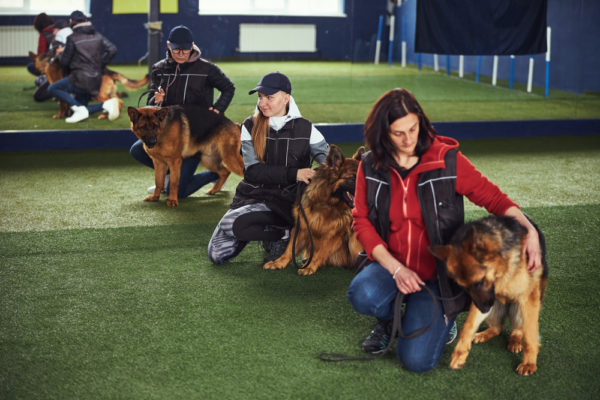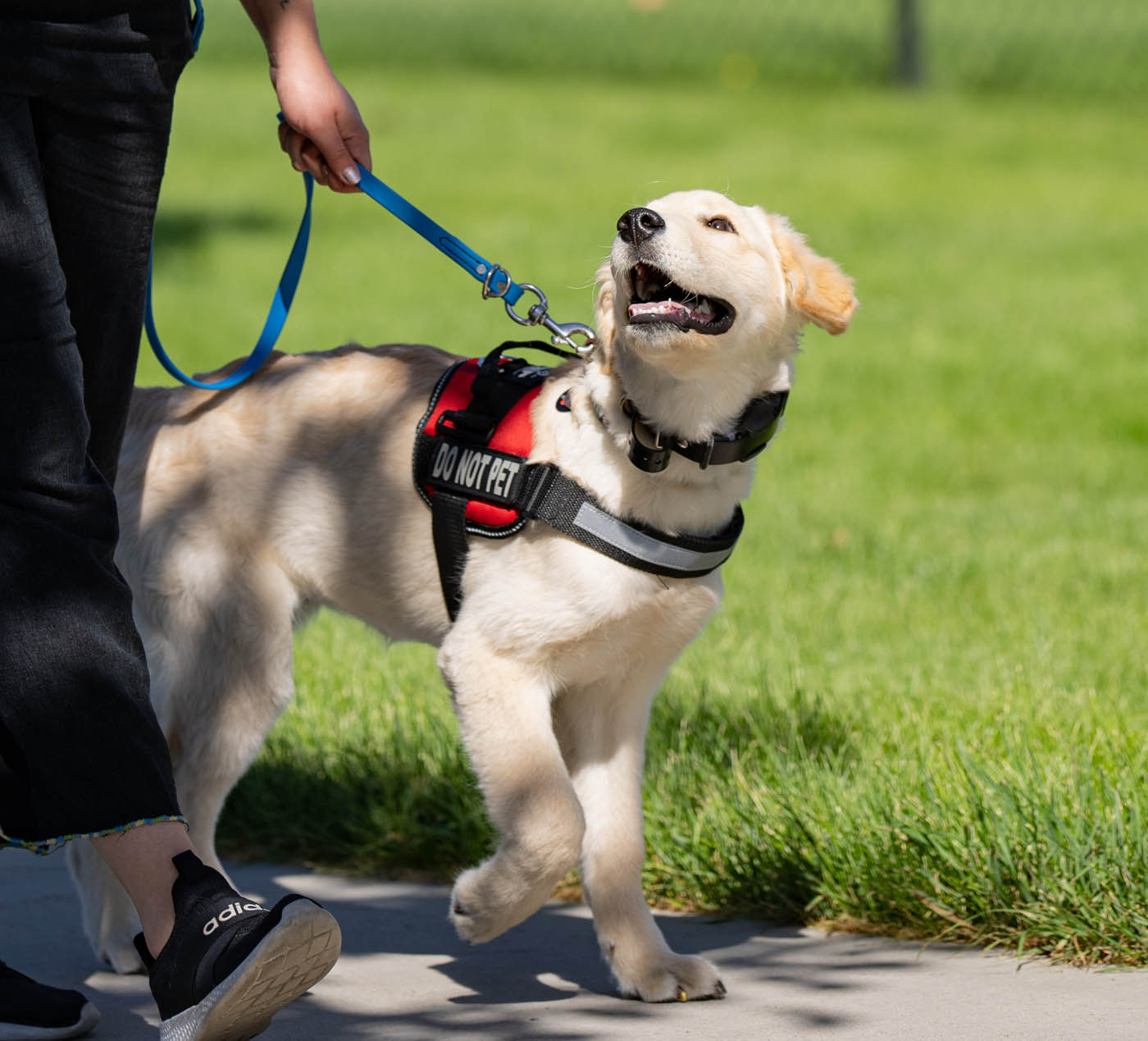Novice's Guide to Successful Dog Training in your home
Efficiently training a dog in your home calls for a nuanced understanding of canine actions and effective interaction techniques. Developing clear training objectives, making use of top quality rewards, and preserving uniformity across relative are essential aspects. Additionally, incorporating training into everyday routines can enhance both involvement and retention. However, several newbie fitness instructors encounter challenges that may prevent progress. To browse these complexities effectively, it's necessary to discover a number of crucial aspects that can change your method and lead to a harmonious relationship with your animal. What basic concepts should every newbie grasp to make certain success?
Recognizing Dog Actions
Recognizing dog habits is important for efficient training and promoting a harmonious relationship between human beings and their canine buddies - Puppy Training. Pet dogs communicate primarily via body movement, articulations, and facial expressions, making it crucial for proprietors to translate these signals precisely. Identifying behaviors such as tail wagging, grumbling, or trembling can offer understandings into a pet dog's emotion and purposes
In addition, understanding the natural impulses of canines, such as their pack mindset, assists owners establish management roles within the house. This is crucial for producing a structured atmosphere where dogs feel safe and are much more receptive to training. Pets are additionally affected by their socialization experiences; very early direct exposure to numerous atmospheres, individuals, and other pets can substantially form their behavior later in life.
Usual behavioral issues, such as aggression, anxiety, or excessive barking, typically originate from misconceptions or unmet needs. Observing and resolving these problems immediately can protect against acceleration and guarantee a positive training experience. By promoting a deep understanding of pet habits, owners can tailor their training techniques to suit their canine buddies, inevitably causing a mannerly and satisfied pet dog.

Important Educating Tools
A well-equipped training room can significantly boost the efficiency of canine training in your home. Crucial training devices guarantee that both the fitness instructor and the canine can participate in efficient sessions that cultivate learning and bonding.

Spending in a durable chain and a comfortable, well-fitting collar or harness is crucial for safety and security and control. These devices help establish borders and make certain the pet stays protected throughout training. Furthermore, a marked training location, devoid of distractions, aids focus for both the instructor and the pet.
Training aids such as training pads, cones, or agility tools can also enhance the experience by introducing range and difficulties. Lastly, having a note pad or electronic app for tracking progression can be invaluable, allowing you to keep in mind successes and areas for enhancement. Using these necessary devices will certainly develop a favorable training atmosphere and lay the structure for efficient learning.
Producing a Training Routine
Establishing a consistent training regimen is vital for reliable pet dog training in the house. A well-structured regular not just assists in strengthening preferred habits yet additionally provides your dog with a complacency and predictability. To create a reliable training regular, start by recognizing specific training objectives, such as standard commands, chain strolling, or house-training.
Pick a designated time address each day for training sessions, preferably see here when your canine is sharp and responsive. Procedure must be brief, roughly 5 to 15 minutes, to maintain focus and protect against fatigue. Consistency in timing and setting will certainly enhance your pet's understanding experience.
Incorporate training into day-to-day tasks to strengthen skills. For instance, practice commands throughout walks or mealtime, which incorporates learning into all-natural routines. Furthermore, stay adaptable and change the routine as essential, accommodating your canine's power levels and state of mind.
Favorable Reinforcement Methods

When carrying out positive reinforcement, it is necessary to pick rewards that are motivating for your canine. High-value deals with, such as little items of poultry or cheese, can be especially reliable during training sessions. In addition, differing the benefits can maintain your dog's interest and interest.
Start with easy commands, like "rest" or "stay," and progressively progression to much more complex tasks. Consistency is vital; make sure that all member of the family make use of the very same commands and incentive systems to prevent complication.
Moreover, it is crucial to continue to be client and avoid frustration. Pets, like human beings, discover at their very own rate. By fostering an encouraging training setting through positive support, you can improve your pet dog's knowing experience Check This Out while reinforcing the bond in between you and your furry buddy, laying the foundation for successful training end results.
Common Educating Challenges
While training a canine in your home can be a gratifying experience, it often features a set of common difficulties that can check both perseverance and uniformity. One widespread concern is disturbance. Pets may end up being conveniently sidetracked by sounds, movements, or even aromas in their setting, making it difficult to preserve their emphasis during training sessions.
Another difficulty is incongruity in commands and support. If relative use different signs or benefits, it can confuse the pet and prevent progression. Developing a unified technique is important for reliable interaction.
In addition, pets can experience frustration or anxiety, particularly if they do not understand what is expected of them. This can lead to unfavorable actions, such as chewing or barking.
Lastly, the timing of support is critical. Postponed benefits can lessen the performance of favorable reinforcement, as pet dogs may fall short to link the behavior with the incentive.
Conquering these difficulties requires commitment, clear communication, and an organized training strategy - Puppy Training. Identifying and addressing these usual challenges will lead the way for a more successful and delightful training experience in your home
Verdict
In verdict, effective dog training at home demands a comprehensive understanding of canine habits and efficient communication techniques. By developing clear training goals and making use of high-quality deals with along with positive reinforcement, the training process becomes much more rewarding for both the fitness instructor and the pet dog.
Developing a consistent training routine is essential for effective dog training at home.Favorable reinforcement methods are essential to reliable canine training, advertising desired behaviors through benefits rather than penalty. By cultivating a helpful training atmosphere through favorable reinforcement, you can enhance your pet dog's understanding experience while strengthening the bond in between you and your fuzzy companion, laying the groundwork for successful training results.
In final thought, successful pet dog training at home requires a comprehensive understanding of canine habits and reliable communication approaches. By establishing clear training goals and making use of top notch deals with along with positive reinforcement, the training process ends up being a lot more satisfying for both the trainer and the canine.